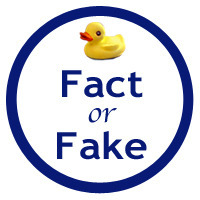Bathroom Readers' Institute's Blog, page 149
January 28, 2014
“This Next Song Is About…Me!”
Musicians often write songs about other musicians—the Commodores’ “Night Shift” is about Jackie Wilson, for example. And sometimes, the musicians who had songs written about them cover those very songs.
 • The Barenaked Ladies’ hit “Brian Wilson” isn’t the most respectful song about the songwriter and major creative force behind the Beach Boys. The song references Wilson’s period in the ‘70s when agoraphobia, drug addiction, and obesity kept him housebound. The chorus of “Brian Wilson” is: “lying in bed / just like Brian Wilson did.” Still, Wilson thought “Brian Wilson” was a pretty good song. When he began recording music and touring again in the 1990s, he made the song part of his set list. A version appears on his 2000 live album Live at the Roxy Theatre.
• The Barenaked Ladies’ hit “Brian Wilson” isn’t the most respectful song about the songwriter and major creative force behind the Beach Boys. The song references Wilson’s period in the ‘70s when agoraphobia, drug addiction, and obesity kept him housebound. The chorus of “Brian Wilson” is: “lying in bed / just like Brian Wilson did.” Still, Wilson thought “Brian Wilson” was a pretty good song. When he began recording music and touring again in the 1990s, he made the song part of his set list. A version appears on his 2000 live album Live at the Roxy Theatre.
• Humorous “psychobilly” singer Mojo Nixon is best known for a song called “Don Henley” must die. Why does he want that to happen? To prevent future reunions of the Eagles, whom Nixon evidently loathes. (“Don’t let him get back together with Glenn Frey” is one lyric.) But in 1994, the Eagles did reunite. Letting bygones be bygones, Henley surprised Nixon a few years later by hopping on stage during the song. Nixon, however, changed the song, for one night only, to “Rick Astley Must Die.”
• In 1970, Neil Young released one of his most popular songs, “Southern Man.” The lyrics take Southerners to task for the South’s history of racism and slavery. Two years later, the Southern rock band Lynyrd Skynyrd wrote and recorded “Sweet Home Alabama,” partially in response to “Southern Man”—it wasn’t meant as an attack on Young, merely to show that the South had many positive qualities. Still, there is the lyric “I hope Neil Young will remember / a Southern man don’t need him around anymore.” Despite the in-song rivalry, Young and Skynyrd front man Ronnie Van Zant were mutual fans. Van Zant liked to put on a Young T-shirt specifically for live performances of “Sweet Home Alabama.” In turn, Young has often performed “Sweet Home Alabama” in concert.
The World’s Most Expensive Movie Props
Movies cost a lot of money—it’s expensive to build sets, pay actors, and occasionally, a single prop. Here are a few examples of expensive movie props.
The purse
 The films of Woody Allen earn critical acclaim, but they are usually modest commercial hits, with subsequently small production budgets. Allen’s latest, Blue Jasmine, is about a wealthy woman forced to live modestly after her husband is imprisoned for financial crimes. The one vestige of Jasmine’s (Cate Blanchett) formerly glamorous life is a tan purse. It’s a Birkin Bag, first released by Hermès in 1984, named after and inspired by French actress Jane Birkin. The handbags are made in limited quantities and are extremely exclusive. Blue Jasmine costume designer Suzy Benzinger only had a $35,000 costume budget—the approximate cost of a single Birkin Bag. The solution: Benzinger allowed the use of her own, personal Birkin in the film. The handbag shows up in nearly every scene of the film, and Blanchett often tosses it on the sidewalk. “I felt [Benzinger’s] blood pressure go up every time it hit the pavement,” Blanchett told Harper’s Bazaar.
The films of Woody Allen earn critical acclaim, but they are usually modest commercial hits, with subsequently small production budgets. Allen’s latest, Blue Jasmine, is about a wealthy woman forced to live modestly after her husband is imprisoned for financial crimes. The one vestige of Jasmine’s (Cate Blanchett) formerly glamorous life is a tan purse. It’s a Birkin Bag, first released by Hermès in 1984, named after and inspired by French actress Jane Birkin. The handbags are made in limited quantities and are extremely exclusive. Blue Jasmine costume designer Suzy Benzinger only had a $35,000 costume budget—the approximate cost of a single Birkin Bag. The solution: Benzinger allowed the use of her own, personal Birkin in the film. The handbag shows up in nearly every scene of the film, and Blanchett often tosses it on the sidewalk. “I felt [Benzinger’s] blood pressure go up every time it hit the pavement,” Blanchett told Harper’s Bazaar.
The crown
Made in the year 1952, 1. April 2000 is a futuristic political satire movie about the post-World War II Allied occupation of Austria. It takes place in the year 2000…when the Allies still won’t give Austria autonomy. Technically speaking, it’s responsible for the most valuable film prop of all time. The actual imperial crown of Austria was loaned to the production. Its reported value, at the time: $70 million.
The pirate ship
In 1986, Roman Polanski directed the high-seas adventure film Pirates. It has taken him more than a decade to make the movie, in part because of Polanski’s well publicized legal troubles, and in part because of studios balking at the enormous production costs. Paramount allocated $15 million to make Pirates, but Polanski ultimately spent $40 million. The movie bombed, taking in $7 million worldwide. That box office take doesn’t even cover the cost of building the Neptune, the full-scale pirate ship built for the film. The steel-hulled galleon had an $8 million price tag, or 20 percent of the film’s entire budget. The Neptune now tours Mediterranean ports, where tourists can board for a fee of 5 euros.
January 27, 2014
The Original Dungeon Masters
As Dungeon & Dragons turns 40 years old, here is a look back at
the history of how this game came to be.
Gary Gygax (pronounced GHEE-Gax) was an insurance underwriter living in Lake Geneva, Wisconsin, in the late 1960s. He made his living calculating the probabilities that an individual seeking to buy insurance would become sick or disabled or die, and he used these estimates to set the premiums and payouts on the policies he reviewed. Every policy was like a roll of the dice: If Gygax calculated correctly, the individual received sufficient coverage at a fair price, and the insurance company had a good shot at earning a fair profit. If he was incorrect, either the individual or the insurance company would lose.
In Gygax’s free time, he loved to roll dice of a different sort: He played war games in his home with fellow members of a club called the Lake Geneva Tactical Studies Association. There, on a giant table in the basement—just as war gamers had done since the invention of Kriegsspiel in the early 1800s (see story on page 251 of Uncle John’s Unsinkable Bathroom Reader)— Gygax and his friends re-created famous battles such as Gettysburg or the D-day landings of World War II and fought them all over again in miniature, devoting countless hours to killing each other’s soldiers with one roll of the dice after another.
THE LONG MARCH
Participating in these games could be a war of attrition in its own right: Mapping out the battlefield took time, and so did setting up dozens and dozens of miniature soldiers just as they would have been positioned in the real battle. War gamers prided themselves on historical accuracy, and this meant that while the main campaign was being fought across the tabletop, countless other battles raged around it as players bickered over one arcane historical point after another, often brandishing military histories and biographies as they argued. Add to this the fact that a single military campaign might drag on for months, with war gamers meeting every weekend in Gygax’s basement until final victory was achieved, and it’s easy to understand why the hobby was popular with only a limited number of people.
SPELLBOUND
Just as they had since the invention of Kriegsspiel, gamers were constantly writing new rules for existing games as well as inventing new ones. Gygax was no exception: In 1968 he took four pages of rules that a friend had written for a game set in the Middle Ages called Siege of Bodenberg and expanded them to 16 pages, creating a new game called Chainmail. Each player still had a dozen or more plastic soldiers, but instead of each figure representing up to 20 men as had been standard in other games, Gygax had each figure represent only one soldier.
Chainmail was an interesting departure from other war games, but after several weekends it started to get boring and attendance at the gaming sessions began to drop off. One afternoon Gygax decided to try something new: He grabbed a plastic dinosaur off a shelf and declared it to be a fire-breathing dragon. Then he took an oversized figure of a Viking warrior and said it was a giant. And then he created a wizard who could throw fireballs and lightning bolts and a “hero” character that had four times the strength of an ordinary character. This fantasy element alienated many of the most orthodox war gamers, but plenty of other people liked it— soon Gygax’s basement wasn’t big enough to hold all the players who wanted to play in his games. He wrote a fantasy supplement to the standard Chainmail rules and published it in 1971.
NEW(ER) AND IMPROVED
One of the early players of Chainmail was a 21-year-old University of Minnesota student named Dave Arneson. He and his wargaming friends began experimenting with Chainmail, keeping what they liked about it and discarding much of the rest. In the process, they created a new game that Arneson named Blackmoor:
• Armies turn into single characters. Chainmail had been a game of combat, with the soldiers controlled by one “general” attacking some strategic point held by monsters or another player’s soldiers. But Arneson’s players got tired of just tackling one military objective after another, so in Blackmoor he got rid of the large armies and had each player assume the identity of a single character. The players rolled dice to determine their characters’ attributes: strength, wisdom, charisma, etc. Then the characters went on decidedly nonmilitary missions, such as sneaking past monsters to steal their treasure or other valuable items that they could sell on the black market. Again, the players rolled dice during each encounter to determine whether or not the mission was successful.
• The birth of role-playing. Placing the emphasis on a single character caused players to identify with their characters in a way that they hadn’t when they were commanding legions of troops. They gave the characters names, invented personalities, and even began to imagine themselves in the role. The players became so attached to their characters that they didn’t want them to die, certainly not during a game—not even after it ended.
• Die hards. Arneson responded by revising the rules of Blackmoor to make the characters harder to kill. In Chainmail, a single roll of the dice determined whether a player died in combat. This made sense when there were dozens of soldiers on the board and the action had to be quick, but it didn’t when each player had only one character—and one life. So Arneson took an idea from Ironclads, a Civil War naval game he’d written. In that game, he used “hit points” to determine how much damage a warship received from cannon fire. It took numerous hits to sink a warship, and the stronger its armor, the more hits were needed. Arneson applied the same concept to the characters in Blackmoor. It would take many successful rolls of the dice to accumulate enough hit points to kill a character; if the character was wearing armor, he was even harder to kill. And since each player had only one character instead of dozens, it was easy to keep track of the hit points.
• You’ve been promoted. Arneson also allowed characters to advance to higher levels after surviving difficult ordeals. The characters grew in strength, wisdom, and other qualities, just like human beings. When one game ended, they carried their points over to the next game.
THE UNDERGROUND
After a few weeks of playing scenarios in conventional landscapes, Arneson decided to try something different. When his players showed up to play the next session, he told them they were going “underground,” into the dungeon of an old castle. Not only was it an interesting change of pace from the usual outdoor scenario, but Arneson also found that it was easier to draw a finite number of tunnels and rooms than it was to map out an entire countryside.
Moving the action to subterranean tunnels also limited the avenues of escape—instead of scattering in every direction in a “crisis,” the players pretty much had to face whatever Arneson threw at them.
ADDITION…AND SUBTRACTION
In the process of inserting all of these interesting elements into the game, Arneson also removed many of the annoying elements of traditional war games. Limited numbers of characters and simplified play reduced the setup time to almost nothing and sped up the pace of the action dramatically. Debates over arcane historical points came to an end—how can you argue about the historical accuracy of stealing gold from a troll?
The role of the game’s host—or “umpire,” to use a word from Kriegsspiel—expanded significantly. He was no longer just a referee responsible for interpreting the rulebook during reenactments of historical battles. The host became the creative master of the game as well, part storyteller, part guide, responsible for designing the dungeon and filling it with monsters and treasures to the limit of his own imagination. He became the Dungeon Master.
After more than six months of developing Blackmoor, in late 1971 Arneson and some friends took the game to Gary Gygax’s house in Lake Geneva and hosted a game in which the players tried to sneak into Castle Blackmoor to open a gate from inside.
Gygax was impressed with Blackmoor and especially liked the dungeon idea—as a kid, he had often played hooky from school to wander the tunnels beneath an abandoned sanatorium overlooking Lake Geneva. He sensed that, with more organization and development, Blackmoor might have commercial potential.
So how did an obscure fantasy game grow into a worldwide phenomenon? Part II of the story is on page 477 of Uncle John’s Unsinkable Bathroom Reader. This article was first published in Uncle John’s Unsinkable Bathroom Reader.
4 Tales of Winter Olympics Almost-Glory
The 2014 Winter Olympics are just around the corner.
They’re sure to offer plenty of triumphs, but for every Brian Boitano,
there’s a Tonya Harding. Here are some other spectacular Olympic duds.
 The 1968 East German Women’s Luge Team
The 1968 East German Women’s Luge Team
This squad came from out of nowhere, and behind the Iron Curtain, to absolutely dominate the luge in the 1968 Winter Olympics in Grenoble. East German lugers finished first, second, and fourth in the games. Their success was inexplicable…or was it? Officials later discovered that they’d won so thoroughly due to the time-honored strategy of cheating. The team had placed heated runners on their sled to increase their speed. Their medals were revoked and the third-place Italian team was given the gold, after the fact.
The 1984 U.S. Men’s Hockey Team
The 1980 Winter Olympics were the site of the “miracle on ice.” The U.S. men’s hockey team, comprised of scrappy amateurs and college players, managed to beat the Soviet Union’s supposedly unconquerable team. It’s still considered one of the most thrilling and definitive Olympic moments. Expectations were high for the U.S. team in 1984, but there was no second miracle. They lost their first two matches, against Canada and Czechoslovakia, before tying Norway and defeating Austria. That late victory wasn’t enough to get them to a medal round. The Americans came in seventh place and didn’t have a strong showing in men’s hockey until 2002, when Olympics officials allowed NHL players to participate. That year, the U.S. took the silver medal.
“Eddie the Eagle”
British skier Eddie Edwards wasn’t willing to let poor eyesight, some extra pounds, and a lack of funding stand in the way of his Olympic dreams. After not making the cut for England’s downhill team at the 1984 Olympics, Edwards switched to ski jumping—mainly because there wasn’t anybody else in his country trying to qualify for the event. Edwards rented a room in a Finnish mental ward (it was cheap) and trained on some slopes nearby. Edwards was allowed to compete at the ’88 games in Calgary…and came in dead last. Nevertheless, “Eddie the Eagle” became a celebrity at home and abroad. Officials later tightened regulations to prevent other hopeless athletes from following his example. This new stipulation became known as the “Eddie the Eagle Rule.”
Philip Boit
Located right on the Equator and without a lot of mountaintop skiing facilities, Kenya isn’t a country typically associated with winter sports. None of this stopped Kenyan Philip Boit from going for the gold in cross-country skiing at the 1998 games. Unfortunately, he came in at 92nd place in the 10 km—dead last. Nevertheless, he was the first Kenyan to ever participate in the Winter Olympics, and he returned for the 2002 games. That year, he finished 64th in the sprinting event. He came back again in 2006 and landed in 92nd in the 15 km Classic. That might sound bad…but he did finish ahead of five other guys.
January 24, 2014
When Did “The Present” Begin?
It’s a harder question than it sounds. Does the present refer to right this second?
Today? This year? The past few years? Fortunately, science has the answer.
 Different scientific disciplines, cultures, and religions base their calendars on different “zero” moments. In geology, as well as other scientific disciplines, the epoch of time referred to as “the present” began on January 1, 1950. It’s a somewhat arbitrary, compromise of a date, but a fixed moment in the study of things that takes a really, really long time to change or move.
Different scientific disciplines, cultures, and religions base their calendars on different “zero” moments. In geology, as well as other scientific disciplines, the epoch of time referred to as “the present” began on January 1, 1950. It’s a somewhat arbitrary, compromise of a date, but a fixed moment in the study of things that takes a really, really long time to change or move.
Here’s how that date was selected. In the earth’s atmosphere, there are carbon isotopes in relatively equal proportion to each other, including the stable carbon-12 and the unstable carbon-14. Plants absorb both kinds, in the form of carbon dioxide, from the atmosphere. When a living thing dies, it dies with inherent carbon-12 and carbon-14, but the carbon-14 immediately begins decaying at a known, constant rate. Scientists can then measure the amount of carbon-14 left in the dead thing to determine its approximate age. This is called “radiocarbon dating,” and it’s been used to determine the age of naturally occurring materials, like plants, rocks, and human remains, as well as things made from naturally occurring materials, including the Dead Sea Scrolls and the Shroud of Turin.
Radiocarbon dating was introduced in the 1940s, but it became workable, with standardized methods and widely adopted in the 1950s. Around that same time, governments began widespread atmospheric testing of nuclear weapons. Scientists soon realized that radiocarbon dating could no longer be relied upon to accurate date objects. Why? Nuclear weapons so massively alter an environment, and an atmosphere, that they threw off the ratio of carbon-14 and carbon-12, even turning a lot of carbon-14 into carbon-12.
Basically, any radiocarbon testing done after January 1, 1950—a date agreed upon because it fell in the midst of the beginnings of nuclear testing—is somewhat unreliable. The period after is called “the present.” Any time before may be referred to, scientifically, as “B.P.” or “before present.”
The Return of the Bride of Fact-or-Fake Friday!
 If you’re new around here, here’s the deal: Below are three weird news items from the past few weeks. Two of them are true, and one of them…we made up. Take a guess, and check the answers to see if you’re right.
If you’re new around here, here’s the deal: Below are three weird news items from the past few weeks. Two of them are true, and one of them…we made up. Take a guess, and check the answers to see if you’re right.
A.
Some gamblers in New Jersey are going to have to look for a new way to predict the winner of the Super Bowl this year. Princess, the football-prognosticating camel, has died. Princess, who resided for 10 years at the Popcorn Park Zoo in Lacey Township, New Jersey, would make her picks by eating graham crackers out of the zookeeper’s hand; each graham cracker would be marked with the name of a team, and whichever graham cracker she ate first was her pick. She correctly picked the winner of the 2013 Super Bowl, and had a particularly stellar run in 2008, when she correctly predicted the outcome of 17 games, including the Super Bowl. According to zookeepers, she was euthanized due to arthritis that had advanced to the point that she could no longer stand, much less selectively eat graham crackers.
B.
Samong “Avajee” Traisattha, the front man of the black metal band Surrender of Divinity, was murdered, and the suspected killer has said it’s because he was tarnishing Satanism. The singer was found dead in his living room, stabbed to death after making silkscreen T-shirts with a fan. The man who authorities believe is responsible wrote a message on Facebook explaining his actions. “Because I’ll die eventually, I want to drag down those who tarnish Satanism with me,” the killer, who authorities believe is Prakarn Harnphanbusakorn, wrote. “Satan is not a toy. Do not call yourself a Satanist if you do not believe in Satan!”
C.
Roy and Larissa Tarnahan of Beauregard, Mississippi have been warned to monitor their telephones more carefully after their daughter, seven-year-old Braylee, made more than 100 calls to 911 in one 30-day span. Braylee’s complaints ranged widely, but often revolved around unfair treatment by her parents, a babysitter, and her little brother, Carson. In one call, Braylee reported “Carson won’t stop picking his nose and it’s so disgusting.” The Tarnahans told the Jackson Clarion-Ledger that they’ve had “a very serious talk with Braylee about how 911 people don’t have time to deal with her not wanting to brush her teeth,” and have also added user passwords to their cell phones.
Loading…
Want more fakes? Check out Uncle John’s Fake Facts. (Really!)
January 23, 2014
Alternate Uses For Cremated Remains
When you or a loved one dies, you can either opt for a burial, or cremation. Those ashes can then be kept in an urn, spread in a favorite spot…or made into something really cool.
 Records. A company called And Vinyly presses cremated ashes into a vinyl record. Along with an album sleeve and label listing the deceased’s name, birth date, and death date, And Vinyly puts the ashes right into the shellac. Customers can choose whether they want music (indie rock is available), soundscapes, a message they record themselves, or just the “pops and crackles” that come with a record. Prices start at about $4,900 for a box of 30 records.
Records. A company called And Vinyly presses cremated ashes into a vinyl record. Along with an album sleeve and label listing the deceased’s name, birth date, and death date, And Vinyly puts the ashes right into the shellac. Customers can choose whether they want music (indie rock is available), soundscapes, a message they record themselves, or just the “pops and crackles” that come with a record. Prices start at about $4,900 for a box of 30 records.
Bullets. Thanks to Holy Smoke, your death doesn’t mean you can’t still go out and hunt and kill animals—they give you “one last hunt” by including cremains in live ammunition. One pound of human remains goes a long way: Holy Smoke can use it to help fill 250 shotgun shells, 100 rifle cartridges, or 125 pistol-reading bullets. Various gauges and styles of ammo are available, from those used in deer hunting down to clay target shooting projectiles. Cost: $1,250 for a case.
Energy. Crematoriums are a big polluter. After all, they burn what’s technically carbon all day long. It’s become such a problem in the U.K. that crematoriums must by law be carbon neutral by 2020. Some are already putting all that heat and energy to good use, which otherwise floats away and is trapped by the atmosphere. The Durham Crematorium in England is offering up its energy, estimating that the heat from a single cremation can power as many as 1,500 televisions. And in In 2011, the Redditch Borough Council in England considered using the power generated by a local crematorium to run the municipal swimming pool. While it’s very “green,” local residents weren’t entirely sold. “It just doesn’t feel right,” said one squeamish skeptic.
Impossible Questions: Tough TV Trivia Edition – The Answers
 Got your answers ready? Let’s see how you did.
Got your answers ready? Let’s see how you did.
What do “Golden Age of Television” series The Arthur Murray Party, The Ernie Kovacs Show, Pantomime Quiz, Space Cadet , and Ted Mack’s Original Amateur Hour have in common?
They’re all TV classics, but the weird distinction these five series share is that each were broadcast, at one time or another, on all four major TV networks of the era: ABC, CBS, NBC, and DuMont. The Arthur Murray Party had a run on each of the four networks twice.
What incredibly popular TV series featured characters named Muriel, Karen, Eustace, and Francis…sort of?
It’s Friends (1994-2004). What, you thought it was about Chandler, Rachel, Ross, Joey, Monica, and Phoebe, falling in love and defining themselves in New York City? Well, you’re right. But so are we— “Muriel,” “Karen,” “Eustace,” and “Francis” are the middle names of those iconic TV characters. There’s Chandler “Muriel” Bing, Rachel “Karen” Green, Ross “Eustace” Gellar, and Joey “Francis” Tribbiani. As for Monica and Phoebe: Monica’s middle-name was never divulged during the run of the show, while Phoebe mentions that she doesn’t know hers.
Other than being Broadway stars of the last decade, what do Laura Benanti, Andrew Rannells, Josh Gad, and Megan Hilty have in common?
All are hugely successful in the realm of Broadway musical theater. Benanti is a four-time Tony Award nominee, winning for Gypsy in 2008. Rannells and Gad co-starred in The Book of Mormon and were both Tony-nominated. Hilty played Glinda in the long-running Wizard of Oz-based hit, Wicked. All four stars were able to capitalize on their stardom by signing on to star in TV series, all for NBC. But by mid-2013, every single one of those shows—Benanti’s Go On, Rannells’ The New Normal, Gad’s 1600 Penn, and Hilty’s Smash—were all cancelled.
Want more impossible questions? Check out Uncle John’s Impossible Questions.
January 22, 2014
Spit Takes
Some amazing things you probably didn’t know about
all that gross water that lives in your mouth.
 The phrase “licking your wounds” comes from the practice of animals nursing themselves back to health by literally licking their wounds. And it works. The saliva of many animals contains antibacterial enzymes, such as peroxidase, cystatins, and lysozyme, as well as the antiviral compound thrombospondin. Saliva also contains various nitrates that turn into nitric oxide upon skin contact, which stops bacteria from growing. Further, opiorphin is present in saliva—it’s an analgesic, or painkiller.
The phrase “licking your wounds” comes from the practice of animals nursing themselves back to health by literally licking their wounds. And it works. The saliva of many animals contains antibacterial enzymes, such as peroxidase, cystatins, and lysozyme, as well as the antiviral compound thrombospondin. Saliva also contains various nitrates that turn into nitric oxide upon skin contact, which stops bacteria from growing. Further, opiorphin is present in saliva—it’s an analgesic, or painkiller.
A 2012 study published in Journal of Family Psychology found that a lot about the nature of a relationship between a father and his daughter can be determined through analysis of the parties’ saliva. Researchers found that girls who were close to their fathers started dating later, and were more prone to monogamy. On the other hand, girls with more “chaotic” relationships with their dads exhibited low levels of the stress hormone cortisol in their saliva. That indicates an extra sensitivity to stress, which can affect decision-making.
Johns Hopkins University is home to a Center for Interdisciplinary Salivary Bioscience Research. In other words, it’s a spit lab. The department is devoted to the science of saliva, and what it can tell us about the human body. In fact, the center’s research has already led to the development of a non-invasive heart disease screening test. Up until now, a heart disease risk test required a painful, sizable blood sample to be taken, and it took weeks for the results to come back. Doctors look for the presence of C-reactive protein, which the CISBR found is also present in saliva. Now a heart disease test involves a simple spit-swab.
Impossible Questions: Tough TV Trivia Edition
 Know the answers to these questions? Then tune in tomorrow—same Uncle John’s time, same Uncle John’s channel.
Know the answers to these questions? Then tune in tomorrow—same Uncle John’s time, same Uncle John’s channel.
What do “Golden Age of Television” series The Arthur Murray Party, The Ernie Kovacs Show, Pantomime Quiz, Space Cadet , and Ted Mack’s Original Amateur Hour have in common?
What incredibly popular TV series featured characters named Muriel, Karen, Eustace, and Francis…sort of?
Other than being Broadway stars of the last decade, what do Laura Benanti, Andrew Rannells, Josh Gad, and Megan Hilty have in common?




